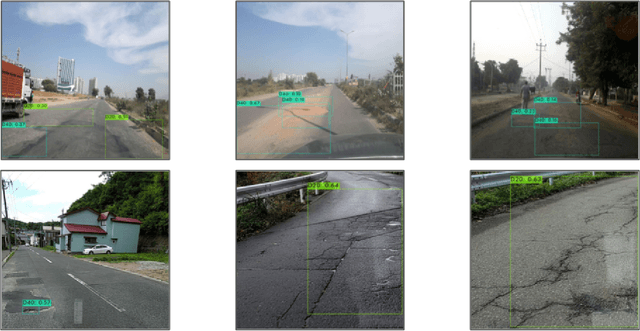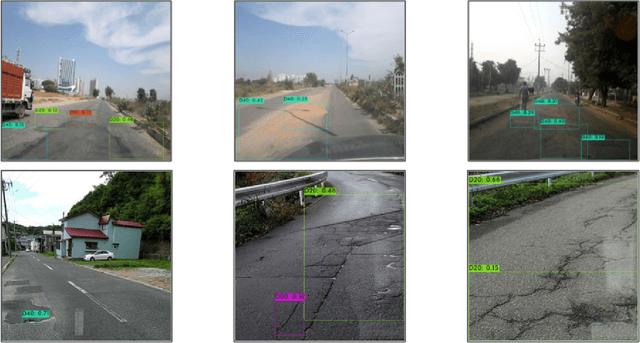Keval Doshi
Adversarial Machine Learning Attacks Against Video Anomaly Detection Systems
Apr 07, 2022



Abstract:Anomaly detection in videos is an important computer vision problem with various applications including automated video surveillance. Although adversarial attacks on image understanding models have been heavily investigated, there is not much work on adversarial machine learning targeting video understanding models and no previous work which focuses on video anomaly detection. To this end, we investigate an adversarial machine learning attack against video anomaly detection systems, that can be implemented via an easy-to-perform cyber-attack. Since surveillance cameras are usually connected to the server running the anomaly detection model through a wireless network, they are prone to cyber-attacks targeting the wireless connection. We demonstrate how Wi-Fi deauthentication attack, a notoriously easy-to-perform and effective denial-of-service (DoS) attack, can be utilized to generate adversarial data for video anomaly detection systems. Specifically, we apply several effects caused by the Wi-Fi deauthentication attack on video quality (e.g., slow down, freeze, fast forward, low resolution) to the popular benchmark datasets for video anomaly detection. Our experiments with several state-of-the-art anomaly detection models show that the attackers can significantly undermine the reliability of video anomaly detection systems by causing frequent false alarms and hiding physical anomalies from the surveillance system.
TiSAT: Time Series Anomaly Transformer
Mar 10, 2022



Abstract:While anomaly detection in time series has been an active area of research for several years, most recent approaches employ an inadequate evaluation criterion leading to an inflated F1 score. We show that a rudimentary Random Guess method can outperform state-of-the-art detectors in terms of this popular but faulty evaluation criterion. In this work, we propose a proper evaluation metric that measures the timeliness and precision of detecting sequential anomalies. Moreover, most existing approaches are unable to capture temporal features from long sequences. Self-attention based approaches, such as transformers, have been demonstrated to be particularly efficient in capturing long-range dependencies while being computationally efficient during training and inference. We also propose an efficient transformer approach for anomaly detection in time series and extensively evaluate our proposed approach on several popular benchmark datasets.
Zero-Shot Action Recognition with Transformer-based Video Semantic Embedding
Mar 10, 2022



Abstract:While video action recognition has been an active area of research for several years, zero-shot action recognition has only recently started gaining traction. However, there is a lack of a formal definition for the zero-shot learning paradigm leading to uncertainty about classes that can be considered as previously unseen. In this work, we take a new comprehensive look at the inductive zero-shot action recognition problem from a realistic standpoint. Specifically, we advocate for a concrete formulation for zero-shot action recognition that avoids an exact overlap between the training and testing classes and also limits the intra-class variance; and propose a novel end-to-end trained transformer model which is capable of capturing long range spatiotemporal dependencies efficiently, contrary to existing approaches which use 3D-CNNs. The proposed approach outperforms the existing state-of-the-art algorithms in many settings on all benchmark datasets by a wide margin.
An Efficient Approach for Anomaly Detection in Traffic Videos
Apr 20, 2021



Abstract:Due to its relevance in intelligent transportation systems, anomaly detection in traffic videos has recently received much interest. It remains a difficult problem due to a variety of factors influencing the video quality of a real-time traffic feed, such as temperature, perspective, lighting conditions, and so on. Even though state-of-the-art methods perform well on the available benchmark datasets, they need a large amount of external training data as well as substantial computational resources. In this paper, we propose an efficient approach for a video anomaly detection system which is capable of running at the edge devices, e.g., on a roadside camera. The proposed approach comprises a pre-processing module that detects changes in the scene and removes the corrupted frames, a two-stage background modelling module and a two-stage object detector. Finally, a backtracking anomaly detection algorithm computes a similarity statistic and decides on the onset time of the anomaly. We also propose a sequential change detection algorithm that can quickly adapt to a new scene and detect changes in the similarity statistic. Experimental results on the Track 4 test set of the 2021 AI City Challenge show the efficacy of the proposed framework as we achieve an F1-score of 0.9157 along with 8.4027 root mean square error (RMSE) and are ranked fourth in the competition.
A Modular and Unified Framework for Detecting and Localizing Video Anomalies
Mar 21, 2021



Abstract:Anomaly detection in videos has been attracting an increasing amount of attention. Despite the competitive performance of recent methods on benchmark datasets, they typically lack desirable features such as modularity, cross-domain adaptivity, interpretability, and real-time anomalous event detection. Furthermore, current state-of-the-art approaches are evaluated using the standard instance-based detection metric by considering video frames as independent instances, which is not ideal for video anomaly detection. Motivated by these research gaps, we propose a modular and unified approach to the online video anomaly detection and localization problem, called MOVAD, which consists of a novel transfer learning based plug-and-play architecture, a sequential anomaly detector, a mathematical framework for selecting the detection threshold, and a suitable performance metric for real-time anomalous event detection in videos. Extensive performance evaluations on benchmark datasets show that the proposed framework significantly outperforms the current state-of-the-art approaches.
Road Damage Detection using Deep Ensemble Learning
Oct 30, 2020



Abstract:Road damage detection is critical for the maintenance of a road, which traditionally has been performed using expensive high-performance sensors. With the recent advances in technology, especially in computer vision, it is now possible to detect and categorize different types of road damages, which can facilitate efficient maintenance and resource management. In this work, we present an ensemble model for efficient detection and classification of road damages, which we have submitted to the IEEE BigData Cup Challenge 2020. Our solution utilizes a state-of-the-art object detector known as You Only Look Once (YOLO-v4), which is trained on images of various types of road damages from Czech, Japan and India. Our ensemble approach was extensively tested with several different model versions and it was able to achieve an F1 score of 0.628 on the test 1 dataset and 0.6358 on the test 2 dataset.
Online Anomaly Detection in Surveillance Videos with Asymptotic Bounds on False Alarm Rate
Oct 10, 2020



Abstract:Anomaly detection in surveillance videos is attracting an increasing amount of attention. Despite the competitive performance of recent methods, they lack theoretical performance analysis, particularly due to the complex deep neural network architectures used in decision making. Additionally, online decision making is an important but mostly neglected factor in this domain. Much of the existing methods that claim to be online, depend on batch or offline processing in practice. Motivated by these research gaps, we propose an online anomaly detection method in surveillance videos with asymptotic bounds on the false alarm rate, which in turn provides a clear procedure for selecting a proper decision threshold that satisfies the desired false alarm rate. Our proposed algorithm consists of a multi-objective deep learning module along with a statistical anomaly detection module, and its effectiveness is demonstrated on several publicly available data sets where we outperform the state-of-the-art algorithms. All codes are available at https://github.com/kevaldoshi17/Prediction-based-Video-Anomaly-Detection-.
Timely Detection and Mitigation of Stealthy DDoS Attacks via IoT Networks
Jun 15, 2020



Abstract:Internet of Things (IoT) networks consist of sensors, actuators, mobile and wearable devices that can connect to the Internet. With billions of such devices already in the market which have significant vulnerabilities, there is a dangerous threat to the Internet services and also some cyber-physical systems that are also connected to the Internet. Specifically, due to their existing vulnerabilities IoT devices are susceptible to being compromised and being part of a new type of stealthy Distributed Denial of Service (DDoS) attack, called Mongolian DDoS, which is characterized by its widely distributed nature and small attack size from each source. This study proposes a novel anomaly-based Intrusion Detection System (IDS) that is capable of timely detecting and mitigating this emerging type of DDoS attacks. The proposed IDS's capability of detecting and mitigating stealthy DDoS attacks with even very low attack size per source is demonstrated through numerical and testbed experiments.
Continual Learning for Anomaly Detection in Surveillance Videos
Apr 15, 2020



Abstract:Anomaly detection in surveillance videos has been recently gaining attention. A challenging aspect of high-dimensional applications such as video surveillance is continual learning. While current state-of-the-art deep learning approaches perform well on existing public datasets, they fail to work in a continual learning framework due to computational and storage issues. Furthermore, online decision making is an important but mostly neglected factor in this domain. Motivated by these research gaps, we propose an online anomaly detection method for surveillance videos using transfer learning and continual learning, which in turn significantly reduces the training complexity and provides a mechanism for continually learning from recent data without suffering from catastrophic forgetting. Our proposed algorithm leverages the feature extraction power of neural network-based models for transfer learning, and the continual learning capability of statistical detection methods.
Any-Shot Sequential Anomaly Detection in Surveillance Videos
Apr 05, 2020


Abstract:Anomaly detection in surveillance videos has been recently gaining attention. Even though the performance of state-of-the-art methods on publicly available data sets has been competitive, they demand a massive amount of training data. Also, they lack a concrete approach for continuously updating the trained model once new data is available. Furthermore, online decision making is an important but mostly neglected factor in this domain. Motivated by these research gaps, we propose an online anomaly detection method for surveillance videos using transfer learning and any-shot learning, which in turn significantly reduces the training complexity and provides a mechanism that can detect anomalies using only a few labeled nominal examples. Our proposed algorithm leverages the feature extraction power of neural network-based models for transfer learning and the any-shot learning capability of statistical detection methods.
 Add to Chrome
Add to Chrome Add to Firefox
Add to Firefox Add to Edge
Add to Edge